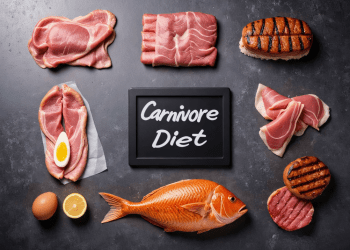The 5:2 diet, also known as the Fast Diet, is a popular intermittent fasting regimen that has gained significant traction in recent years as an effective approach to weight loss and overall health improvement.
Popularized by British journalist and TV personality Dr. Michael Mosley in his 2013 book “The Fast Diet,” the 5:2 diet has since amassed a dedicated following among those seeking a flexible and sustainable way to manage their weight.
The appeal of the 5:2 diet lies in its simplicity and adaptability to individual preferences. By allowing for normal eating on five days of the week and restricting calorie intake to 500-600 calories on the remaining two days, the diet offers a balanced approach that doesn’t require the complete elimination of any food groups.
This part-time dieting method has resonated with many individuals who have struggled with the rigidity of traditional calorie-restricted diets.
As the focus on intermittent fasting and its potential health benefits continues to grow in modern wellness communities, the 5:2 diet has emerged as a go-to choice for those seeking a structured yet manageable way to incorporate fasting into their lifestyle.
With its simplicity, flexibility, and promising results, the 5:2 diet has solidified its place as a popular and effective weight loss and health optimization strategy.
How the 5:2 Diet Works
The 5:2 diet is a straightforward yet effective approach to intermittent fasting that allows individuals to enjoy the benefits of calorie restriction without the need for constant dieting. Understanding how this diet works is essential for anyone considering it as a weight loss strategy or a means to improve overall health.
Structure of the 5:2 Diet
The 5:2 diet is built around a simple framework:
- Normal Eating Days: For five days of the week, participants eat normally without any specific calorie restrictions. This means you can enjoy a variety of foods without worrying about counting calories.
- Fasting Days: On the remaining two days, calorie intake is drastically reduced to about 500 calories for women and 600 calories for men. These fasting days do not have to be consecutive; for example, you might choose to fast on Mondays and Thursdays.
This structure allows for flexibility, making it easier for individuals to adhere to the diet compared to traditional calorie-restricted diets.
Caloric Intake Guidelines
On fasting days, the caloric intake is significantly reduced:
- Women: Approximately 500 calories
- Men: Approximately 600 calories
This reduction represents about 25% of the typical daily caloric needs for most individuals. The calories consumed on fasting days can be spread out over meals or consumed in one or two sittings, depending on personal preference.

Importance of Non-Consecutive Fasting Days
One of the key features of the 5:2 diet is the requirement for non-consecutive fasting days. This approach is important for several reasons:
- Nutritional Balance: Spacing out fasting days allows the body to receive essential nutrients and energy on non-fasting days, which is crucial for overall health and well-being.
- Sustainability: Non-consecutive fasting days make the diet more manageable and less daunting, as individuals can enjoy regular eating patterns in between fasting days.
- Psychological Ease: Having days where you can eat normally helps to reduce feelings of deprivation, making it easier to stick to the diet long-term.
Comparison with Other Intermittent Fasting Methods
The 5:2 diet is one of several popular intermittent fasting methods. Here’s how it compares to other approaches:
- Time-Restricted Feeding: This method involves eating within a specific time window each day (e.g., 8 hours of eating followed by 16 hours of fasting). Unlike the 5:2 diet, time-restricted feeding focuses on when you eat rather than how much you eat.
- Alternate Day Fasting: Similar to the 5:2 diet, this method involves alternating between fasting days and regular eating days. However, on fasting days, participants may consume very few calories or none at all, making it more restrictive than the 5:2 diet.
The 5:2 diet strikes a balance between flexibility and structure, making it an appealing option for those looking to incorporate intermittent fasting into their lifestyle without feeling overly restricted. By understanding how the 5:2 diet works, individuals can better prepare themselves for success in their weight loss and health improvement journeys.
Nutritional Guidelines for the 5:2 Diet
Adopting the 5:2 diet is not just about when you eat, but also about what you eat. To maximize the benefits of this intermittent fasting approach, it’s essential to focus on nutritious foods that support overall health and well-being.
Below, we outline the recommended foods for both normal eating days and fasting days, along with hydration tips and the importance of supplementation.
Recommended Foods for Normal Eating Days
On the five non-fasting days, you have the freedom to enjoy a variety of foods. However, to promote optimal health and weight management, it’s best to focus on whole, nutrient-dense options. Here are some key food groups to include:
- Vegetables: Aim for a colorful variety, including leafy greens (spinach, kale), cruciferous vegetables (broccoli, cauliflower), and other options like bell peppers and carrots. These are low in calories but high in vitamins, minerals, and fiber.
- Whole Grains: Choose whole grains over refined grains. Options like quinoa, brown rice, oats, and whole grain bread provide essential nutrients and fiber, which can help keep you feeling full.
- Lean Proteins: Incorporate sources of lean protein such as chicken, turkey, fish, legumes (beans, lentils), and tofu. Protein is crucial for muscle maintenance and can help curb hunger.
- Healthy Fats: Include sources of healthy fats such as avocados, nuts, seeds, and olive oil. These fats are important for heart health and can help you feel satisfied.
Foods to Avoid on Normal Eating Days
While you have the freedom to eat normally, it’s advisable to limit or avoid:
- Processed Foods: Foods that are heavily processed often contain unhealthy additives, preservatives, and excess sodium.
- High-Sugar Items: Sugary snacks, desserts, and beverages can lead to energy crashes and increased cravings, making it harder to maintain a balanced diet.
Suggested Foods for Fasting Days
On fasting days, the focus shifts to low-calorie, nutrient-dense foods that can help you stay satisfied while adhering to the caloric limit. Here are some suggestions for meals:
Breakfast Ideas
- Vegetable Omelet: Made with egg whites and a variety of vegetables like spinach, tomatoes, and bell peppers.
- Greek Yogurt: A small serving of plain Greek yogurt topped with a few berries for added flavor.

Lunch Ideas
- Salad: A large salad with mixed greens, cucumbers, tomatoes, and a light vinaigrette dressing. Add a small portion of lean protein, such as grilled chicken or chickpeas.
- Soup: A broth-based vegetable soup with plenty of non-starchy vegetables and herbs for flavor.
Dinner Ideas
- Grilled Fish or Chicken: A small portion of grilled fish or chicken served with steamed vegetables.
- Stir-Fried Vegetables: A mix of your favorite vegetables stir-fried with minimal oil and spices.
Importance of Hydration and Supplementation
Staying hydrated is crucial, especially on fasting days. Water, herbal teas, and black coffee are excellent options that can help keep you hydrated without adding calories. Here are some tips:
- Hydration: Aim for at least 8 cups (about 2 liters) of water daily. This can help manage hunger and support overall bodily functions.
- Multivitamin Supplementation: Consider taking a multivitamin during fasting days to ensure you’re meeting your nutritional needs, especially if your calorie intake is significantly reduced. This can help prevent deficiencies and support overall health.
By following these nutritional guidelines, you can enhance the effectiveness of the 5:2 diet while promoting a balanced and healthful eating pattern. Focusing on whole foods and staying hydrated will not only support weight loss but also contribute to improved energy levels and well-being.
Health Benefits of the 5:2 Diet
The 5:2 diet has been associated with a range of potential health benefits, from weight loss to improved metabolic and cardiovascular health. Here’s a closer look at some of the key advantages of this intermittent fasting approach:
Weight Loss
The 5:2 diet works by creating a calorie deficit, which leads to fat burning and weight loss. During the fasting days, the body is forced to rely on stored fat for energy, resulting in gradual weight reduction over time.
Studies suggest that individuals following the 5:2 diet can expect to lose around 1 pound (0.45 kg) per week on average. A 2021 study found the diet to be effective for short-term weight loss, with participants experiencing significant reductions in both body weight and body fat percentage.
Personal success stories abound, with many individuals reporting successful weight loss and improved body composition after adopting the 5:2 diet. However, it’s important to note that individual results may vary based on factors such as age, gender, starting weight, and overall adherence to the diet.
Metabolic Health
Intermittent fasting, as practiced in the 5:2 diet, has been shown to improve insulin sensitivity and blood sugar control. By reducing calorie intake and allowing the body to enter a fasted state, the diet may help lower the risk of developing type 2 diabetes.
A study published in the Annual Review of Nutrition found that intermittent fasting can enhance glucose regulation and reduce fasting insulin levels, both of which are important markers of metabolic health.
Cardiovascular Health
The 5:2 diet may also have a positive impact on cardiovascular health. Research suggests that intermittent fasting can lead to improvements in cholesterol levels, blood pressure, and other risk factors for heart disease.
A study published in the Journal of the American College of Cardiology found that alternate-day fasting, a similar intermittent fasting approach, resulted in significant reductions in LDL (bad) cholesterol and triglyceride levels.
Brain Health
Emerging evidence suggests that the 5:2 diet may offer cognitive benefits and potentially reduce the risk of neurodegenerative diseases. Animal studies have shown that intermittent fasting can improve brain function, including enhanced focus and memory.
While more research is needed to fully understand the effects of the 5:2 diet on human brain health, the potential for improved cognitive performance and reduced dementia risk is an exciting area of study.
It’s important to note that while the 5:2 diet shows promise in terms of health benefits, individual results may vary. Factors such as overall diet quality, exercise, and genetics can all play a role in determining the effectiveness of the diet. As with any significant dietary change, it’s always best to consult with a healthcare professional before starting the 5:2 diet.
Scientific Evidence and Studies Supporting the 5:2 Diet
The 5:2 diet has garnered attention not only for its simplicity but also for the scientific research backing its effectiveness. This section delves into the studies that support the 5:2 diet, comparing it with other intermittent fasting methods to highlight its unique benefits.
Overview of Research Supporting the 5:2 Diet
Numerous studies have examined the effects of intermittent fasting, including the 5:2 diet. Research suggests that this approach is as effective as traditional calorie restriction for weight loss. A review published in the Annual Review of Nutrition noted that intermittent fasting diets, including the 5:2 diet, can lead to significant reductions in body weight and fat mass.
Key findings from various studies include:
- Weight Loss: Participants following the 5:2 diet typically lose around 1 pound (0.45 kg) per week, similar to those on continuous calorie restriction diets. This weight loss is primarily attributed to the caloric deficit created on fasting days.
- Metabolic Improvements: Research indicates that the 5:2 diet can enhance insulin sensitivity and improve blood sugar control, which is particularly beneficial for individuals at risk of type 2 diabetes. A study found that participants experienced significant reductions in fasting insulin levels after following the diet.
- Cholesterol and Blood Pressure: The 5:2 diet may also positively impact cardiovascular health. Studies have shown reductions in LDL (bad) cholesterol and triglycerides, as well as improvements in blood pressure among participants.
Comparison with Other Intermittent Fasting Methods
While the 5:2 diet is a popular intermittent fasting method, it is essential to compare it with other approaches to understand its effectiveness and appeal.
- Alternate Day Fasting: This method involves alternating between days of normal eating and days of complete fasting or very low calorie intake. Research indicates that alternate day fasting can lead to similar weight loss results as the 5:2 diet, but some individuals may find the 5:2 diet easier to adhere to due to its flexibility.
- Time-Restricted Feeding: This approach limits eating to a specific time window each day, such as 16 hours of fasting followed by an 8-hour eating period. While time-restricted feeding has shown promising results for weight loss and metabolic health, the 5:2 diet offers a more straightforward structure that may be more appealing to those who prefer not to restrict eating windows daily.
Long-Term vs. Short-Term Effectiveness
The 5:2 diet has shown effectiveness in both short-term and long-term weight management. In the short term, many individuals experience rapid weight loss, which can be motivating. However, the long-term sustainability of the diet is crucial for lasting results.
- Short-Term Effectiveness: Many studies indicate that participants can achieve significant weight loss within the first few months of following the 5:2 diet. This is often attributed to the caloric deficit created on fasting days.
- Long-Term Sustainability: Experts have mixed opinions on the long-term sustainability of the 5:2 diet. Some nutritionists suggest that while it can be effective for weight loss, the restrictive nature of fasting days may lead to difficulties in maintaining nutrient intake and energy levels over time.
Insights from Experts on the Sustainability of the Diet
Experts emphasize that the 5:2 diet can be a practical approach for many individuals, particularly those who struggle with traditional calorie counting. Dr. Michael Mosley, the diet’s creator, suggests that it can help individuals lose weight gradually and sustainably. However, he also recommends transitioning to a more flexible eating pattern, such as a 6:1 approach, once a healthy weight is achieved.
Nutritionists highlight the importance of maintaining a balanced diet on non-fasting days, emphasizing that loading up on unhealthy foods can negate the benefits of fasting. Lovisa Nilsson, a nutritionist, notes that the 5:2 diet promotes fat loss over muscle loss, making it a favorable option for those looking to improve body composition.
The 5:2 diet is supported by a growing body of research that highlights its effectiveness for weight loss and metabolic health. Its flexibility compared to other intermittent fasting methods makes it an appealing option for many individuals looking to improve their health without the constraints of traditional dieting.
While more long-term studies are needed to fully understand its benefits, the existing evidence suggests that the 5:2 diet can be a valuable tool for achieving health and wellness goals.
Pros and Cons of the 5:2 Diet
The 5:2 diet has gained popularity as a flexible and sustainable approach to weight management and overall health improvement. However, like any dietary plan, it comes with its advantages and disadvantages.
Below, we explore the pros and cons of the 5:2 diet to help you determine if it’s the right fit for you.
Pros of the 5:2 Diet
- Flexibility and Ease of Adherence
One of the most appealing aspects of the 5:2 diet is its flexibility. Unlike traditional diets that often require strict meal plans and calorie counting every day, the 5:2 diet allows individuals to eat normally for five days of the week. This flexibility makes it easier for many people to stick to the diet long-term without feeling deprived. - No Strict Food Restrictions
The 5:2 diet does not impose strict restrictions on the types of foods you can eat on non-fasting days. This means you can enjoy a wide variety of foods, provided you focus on a balanced diet rich in whole foods, vegetables, lean proteins, and healthy fats. This approach helps prevent feelings of deprivation and encourages healthier eating habits. - Potential for Sustainable Weight Loss
Many individuals find that the 5:2 diet can lead to sustainable weight loss. Studies suggest that participants can lose about 1 pound (0.45 kg) per week, making it a realistic and achievable goal. The diet’s structure allows for gradual weight loss, which is often more sustainable than rapid weight loss methods.
Cons of the 5:2 Diet
- Nutrient Deficiencies on Fasting Days
One potential drawback of the 5:2 diet is the risk of nutrient deficiencies on fasting days. With a limited caloric intake of 500-600 calories, it can be challenging to meet all nutritional needs. It’s essential to prioritize nutrient-dense foods on fasting days to minimize this risk. - Possible Energy Dips and Hunger Issues
Some individuals may experience energy dips or increased hunger on fasting days, which can make adherence difficult. While many people adapt to the fasting schedule over time, it may take some time for your body to adjust, and not everyone will find it easy. - Not Suitable for Everyone
The 5:2 diet may not be appropriate for everyone, particularly individuals with certain health conditions, such as diabetes, eating disorders, or those who are pregnant or breastfeeding. It’s crucial to consult with a healthcare professional before starting the diet to ensure it aligns with your health needs.
Practical Tips for Following the 5:2 Diet
If you decide to try the 5:2 diet, here are some practical tips to help you succeed:
- Meal Planning Strategies for Fasting Days: Plan your meals ahead of time to ensure you stay within your caloric limits while still consuming nutrient-dense foods. Consider incorporating non-starchy vegetables, lean proteins, and healthy fats to maximize nutrition.
- Suggestions for Easing Into the Diet: If you’re new to intermittent fasting, consider easing into the 5:2 diet by gradually extending the time between your last meal of the day and your first meal the next day. Start with a 12-hour fast and gradually increase it.
- Importance of Monitoring Progress: Keep track of your progress, including weight, energy levels, and how you feel overall. This can help you make necessary adjustments and stay motivated.
- Consulting with Healthcare Professionals: Before starting the 5:2 diet, it’s advisable to consult with a healthcare professional or a registered dietitian. They can provide personalized guidance and ensure that the diet is safe and suitable for your individual health needs.
The 5:2 diet offers a flexible and potentially effective approach to weight management and health improvement. However, it’s essential to consider both the pros and cons and to approach the diet thoughtfully to achieve the best results.
Final Thoughts: The Appeal and Effectiveness of the 5:2 Diet
The 5:2 diet has gained significant popularity as a flexible and effective approach to weight loss and overall health improvement. Its simplicity, adaptability, and potential benefits have made it an attractive option for many individuals seeking a balanced and sustainable way to manage their weight and well-being.
One of the key appeals of the 5:2 diet is its flexibility. By allowing for normal eating on five days of the week and restricting calorie intake on the remaining two days, the diet offers a balanced approach that doesn’t require the complete elimination of any food groups. This part-time dieting method has resonated with many individuals who have struggled with the rigidity of traditional calorie-restricted diets.
Research suggests that the 5:2 diet can be an effective tool for weight loss, with participants typically losing around 1 pound (0.45 kg) per week. Additionally, studies indicate that the diet may offer various health benefits, such as improved insulin sensitivity, reduced risk of type 2 diabetes, and potential cognitive enhancements.
However, it’s essential to consider individual health needs and consult with healthcare professionals before starting the 5:2 diet. While the diet shows promise in terms of weight loss and health improvement, it may not be suitable for everyone, particularly those with certain health conditions or a history of disordered eating.
Additional Resources
For those interested in exploring the 5:2 diet further, here are some additional resources:
- Recipes and Meal Plans: BBC Good Food offers a variety of recipes and meal planning suggestions for both normal eating days and fasting days.
- Intermittent Fasting Information: Healthline provides a comprehensive guide to the 5:2 diet and other intermittent fasting methods, including their potential benefits and drawbacks.
- Expert Opinions: Women’s Health features insights from nutritionists and health experts on the effectiveness and sustainability of the 5:2 diet.
- YouTube Inspiration: For visual learning and meal ideas, check out videos like “How to do the 5:2 diet with Vicki Edgson” and “Dr Michael Mosley on weight loss and the 5-2 diet“.












